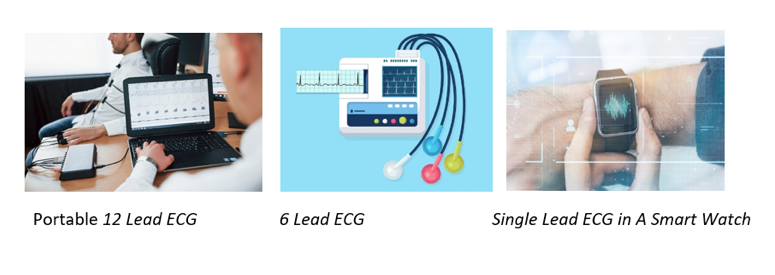Unrivalled Precision of 12-Lead ECG
July 21, 2023 | Friday | Views | By Ojasvi Nirav, Senior Cardiac Analyst, Agatsa Software
As individuals, we must make informed decisions and prioritise the use of 12-lead ECG devices for prevention and monitoring purposes
The mortality rate related to Cardiovascular Diseases (CVD) is unfortunately very high. CVD refers to conditions that affect the heart and blood vessels, such as heart attacks and strokes. Additionally, lack of awareness about the importance of a healthy lifestyle and delayed medical intervention can contribute to the gravity of the situation.
It is crucial for individuals to understand the significance of timely and accurate diagnosis. When a healthcare condition is detected early and accurately with a 12 Lead ECG, or Electrocardiogram it allows for swift intervention and appropriate treatment.
Studies published in medical journals, as well as the consensus of cardiologists and medical societies, consider the 12-Lead ECG as the standard tool due to its higher sensitivity and specificity. This means that it is more capable of identifying heart abnormalities, leading to more accurate diagnoses and appropriate treatment plans for patients.
From Labs to Hands: Rise of Portable ECG devices
The global market for portable ECG devices has witnessed significant advancements over the years, with various innovative products leading the way. The initial breakthrough came with the introduction of the single-lead ECG patch, providing a portable solution for heart monitoring. However, the challenge of continuous monitoring with Single Lead ECG patch persisted.
Even the integration of single lead ECG devices into smartwatches was initially considered a mere gimmick rather than a serious medical tool. Overcoming the challenge of continuous monitoring and the limitations of single lead and six lead portable ECG devices, the industry experienced a revolution with the development of a 12-lead touch-based ECG device.
The market for portable 12 Lead ECG devices continues to expand as these technological advancements improve the effectiveness, accessibility, and convenience of monitoring heart health on the go.
Difference Between 12 Lead ECG, 6 Lead ECG and Single Lead ECG
When comparing the interpretation of the graph obtained from a Single Lead ECG and a 12-Lead ECG, there are notable differences in the areas of the graph that can be seen.
The level of detail measurements of intervals, segments, and amplitudes on the ECG graph empowers healthcare professionals to detect abnormalities that may indicate myocardial infarction, ventricular hypertrophy, electrolyte imbalances, myocardial ischemia, and other critical cardiac conditions. The 12-lead ECG serves as a vital tool in making accurate diagnoses, leading to appropriate treatment strategies.
12 lead can detect ST elevation and depression which corresponds to MI, Hyper-acute T Wave, Ischemia, while Single lead cannot detect ST elevation or depression because readings from minimum 2 precordial leads are required to confirm Myocardial Infraction.

What You need to Know while choosing ECG
In the dynamic world of cardiac diagnostics, the 12-lead ECG shines as the pinnacle of accuracy and comprehensive assessment. Its complete limb lead configuration, precise measurements, and ability to differentiate between cardiac conditions make it an indispensable tool in the hands of healthcare professionals.
As individuals, we must make informed decisions and prioritise the use of 12-lead ECG devices for prevention and monitoring purposes. Let us move beyond superficial trends and embrace the true essence of care and concern for our own and our loved ones' heart health, extending our dedication beyond special occasions to the regular days that truly matter.
Ojasvi Nirav, Senior Cardiac Analyst, Agatsa Software











